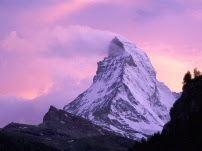The methods are based on the false self9ego or waking entity). The Methodists cannot reach the ultimate. When one becomes aware of the fact that ‘I’ is illusion then there is nothing left other then consciousness, which is knower of all the known . When knower is formless then the known ceases to exist as real. Thus the knower and the known are one in essence. Therefore, there is no second thing other then consciousness, which is formless. Thus consciousness is the ultimate truth.
Even the scriptures declare:-
Tat tvam asi: -Thou art That (Sam Veda). “Self is that”
Prajnanam Brahma: - Consciousness is ultimate reality (Rig Veda).
Ayam Aatma Brahma: -The Self is ultimate truth (Atharva Veda).
Aham Brahma Asmi: -Self is ultimate reality (Yajur veda).
(1) Consciousness [the Self] is real
(2) The universe or mind is unreal, and
(3) Consciousness is the mind or universe, because universe or mind is mere illusion created out of consciousness.
One need not stop at the second because the third explains the other two. It signifies that the universe is real if perceived as the Self [consciousness] and unreal if perceived as apart from the Self (consciousness). Hence illusion and reality are one and the same because both are one in essence. Realizing the essence, which is consciousness as the innermost Self, is Self-Realization or Truth- Realization of GOD- Realization. Thus Sri, Sankara‘s declaration is rational truth, scientific truth and also ultimate truth.
Buddha also holds that this world which changes from moment to
moment is no real, it is only a reflection and a thing of which it is the
reflection alone is real. Buddha was not an atheist. He never denied reality.
There is nothing in his words or teaching to show that he considered truth
to be non-existent like horns of a hare. He could not have held the foolish
view that something came out of nothing. It is true; some of his disciples
misunderstood and misinterpreted him. his idea was that the truth which cannot
be designated by a name , or described is words and of which one cannot even
say whether it is existent or none extent , is like non-existent. The
idea is quiet in agreement with the view of Upanishads. An object which cannot
even be talked about, is, for all practical purposes, as good as non-extent. But
it is not non-existent in the sense that the son of barren woman is
non-existent. This subtle idea, Buddha's contemporaries and even his
disciple fail to catch. In one passage Buddha says clearly: Srmana Guutama was
an atheist. It is annihilation of non-existent of truth that he teaches. So
will people attribute to me atheism, which is not mine? So will they ascribe me
to the theory of non-existent, which again is not mine.
From these similar statements of Buddha it is clear that he was
not an atheist. All philosophers old and new arrive at the same point. Orthodox
Advaita (monism) that is inevitable; the people of thoughtful
temperament cannot find peace and quietude until they do so. Moksha
(liberation) is in the realization of oneness with God. They speak of God Goddesses,
devotion and devotee, only in an in accurate way only from the standpoint of
dvaithi. After realization oneness with God, there is no distinction
between go and devote and the word "devotion" has no meaning.
Sankara was criticized for his views on Maya [illusion] without understanding him.
He said that (1) Brahman [the Self] is real (2) the universe is unreal,
and (3) Brahman is the universe. He did not stop at the second because
the third explains the other two. It signifies that the universe is real
if perceived as the ‘Self’ and unreal if perceived as apart from the
Self. Hence Maya or illusion and reality are one and the same.
The realists criticize the concept of illusion without understanding it. He said that :-
The realists criticize the concept of illusion without understanding it. He said that :-
(1) Consciousness [the Self] is real
(2) The universe or mind is unreal, and
(3) Consciousness is the mind or universe, because universe or mind is mere illusion created out of consciousness.
One need not stop at the second because the third explains the other two. It signifies that the universe is real if perceived as the Self [consciousness] and unreal if perceived as apart from the Self (consciousness). Hence illusion and reality are one and the same because both are one in essence. Realizing the essence, which is consciousness as the innermost Self, is Self-Realization or Truth- Realization of GOD- Realization. Thus Sri, Sankara‘s declaration is rational truth, scientific truth and also ultimate truth.
When the ultimate truth is rightly
known and one attains eternal life thereby. Through soul, the innermost self he
gains strength and through its knowledge immortality.
